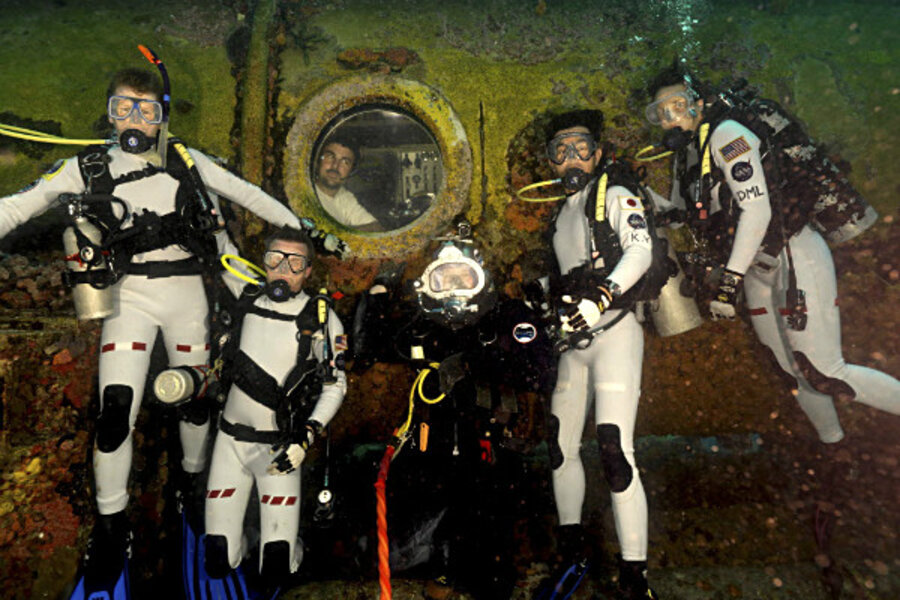World's only undersea lab could shut down
The world's last undersea research laboratory, is running out of money.
The Obama administration cut off funding for the 25-year-old Aquarius Reef Base located 63 feet underwater in the Florida Keys National Marine Sanctuary. If it cannot raise money on its own, it will be forced to shut down. The base is owned by the federal government and operated by scientists from the University of North Carolina–Wilmington.
Sylvia Earle, former chief scientist for the National Oceanic and Atmospheric Administration and now explorer-in-residence at National Geographic, spoke with NPR about the importance of undersea research facilities, especially of saturation diving, in which divers live for long periods under pressure to prevent illness associated with decompression.
"This difference in perspective you get when you don't have to bounce in and out — you have the ability to stay for hours and hours and watch that fish do its thing," she told NPR's Greg Allen, "or conduct an experiment without constantly looking at your watch saying, 'I've got three minutes left, I've got to go.' "
Saturation diving was pioneered in 1950s by the underwater explorers Jacques Cousteau and Ed Link. In 1970, Earle led the first team of women on a saturation dive.
Saul Rosser, operation director of the Aquarius Reef Base, set up a weeklong saturation diving mission to celebrate the 50-year anniversary of Conshelf I immersion by Cousteau off Marseille, a depth of ten meters.
“Twenty-one years after my life was changed forever by Captain Cousteau, and 50 years after Conshelf I proved that saturation diving could work, thereby unlocking the ability to spend almost limitless time at home beneath the sea,” wrote Rosser on his blog
“With Dr. Sylvia Earle as our leader and the amazingly talented underwater cinematographer D.J. Roller of Liquid Pictures putting together an amazing media group, this mission is an unprecedented opportunity to bring the public beneath the waves to experience the wonder of living beneath the sea.”







